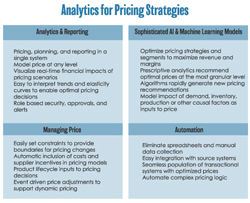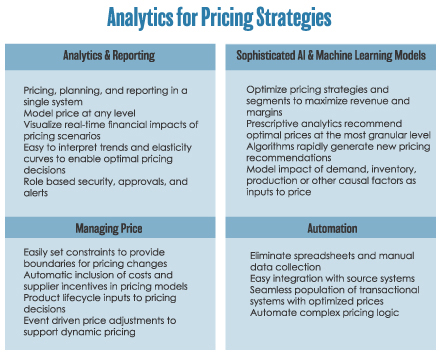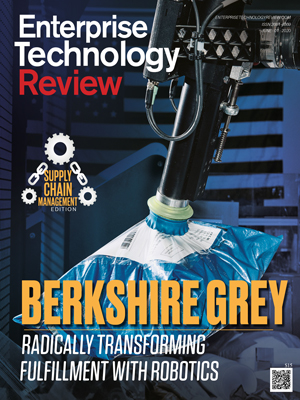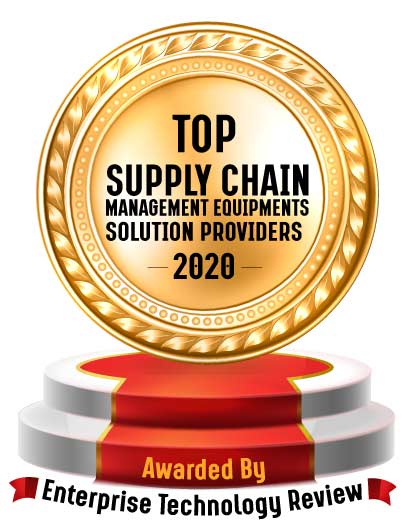 Dan Barrett and Dallas Crawford,QueBit
Dan Barrett and Dallas Crawford,QueBitEasy integration to source systems followed by seamless population of transactional systems with optimized prices establishes the best-in-class solution. With those processes in place price alignment enables complex pricing logic automation.
-
Crawford suggested that PriceAlign’s Machine Learning models can be more adaptive than typical time series models in the pandemic environment
Price alignment was designed to alleviate the pain for any manufacturing organization using simple rules or trial-and-error methods to derive prices; this is especially true if corporate objectives include rapidly and repeatedly adjusting and maintaining prices at the most granular level.
Manufacturing pricing experts share value of automation
Pricing experts, Dallas Crawford and Dan Barrett were asked to elaborate how manufacturers should analyze pricing needs using data analytics.
Crawford(pictured left)insisted that price aligning with data analytics can be done readily in real-time. The ability to concentrate on high and low volumes that fall outside a normal distribution of trend or seasonality can inform where margin opportunities exist.
This is particularly valuable during the pandemic where buying patterns are in greater flux.
Higher volume provides opportunities to adjust prices based on demand or to capture market share. Lower volume provides opportunities to analyze pricing, determining if market share is being lost or if the product’s lifecycle is near its end.
Barrett (pictured left) noted the best method to analyze and optimize customer pricing is to model the data and ensure that the analytics platform supports it at a very discrete level. Customer data by location or product SKUs allow for optimal delivery of unique pricing. Understanding and forecasting the customers’ pricing elasticity is key to determining the optimal price.
Pricing sensitivity for manufacturers during the pandemic
Crawford suggested that PriceAlign’s Machine Learning models can be more adaptive than typical time series models in the pandemic environment. Adding more qualitative and timely input variables (like fuel costs) allow the model to be more contextual and tolerant to the aberrant data collected during this unique event. The pandemic gives manufacturing organizations, which embrace the PriceAlign technology, the opportunity to study and model the effects to be better prepared for future events. Shutdowns will potentially cause incomplete data; future training of Machine Learning models will have to deal with it.
Barrett is convinced while the pandemic is an important driver for price aligning, it remains just one factor impacting manufacturers on the demand and supply side.
By eliminating spreadsheets, price aligning improves the ability to rapidly adjust pricing to the most detailed levels and market conditions. In weeks, the automated pricing data ensures that manufacturers are able to visualize customer segments driven by variables that shape demand, such as demographics, allowing for more targeted and dynamic pricing adjustments.
Only through automated price alignment are mid-sized manufacturers able to raise pricing strategies to new levels of sophistication, achieving dynamic pricing based on a variety of factors, and understand price elasticity across different customers, products, or regions.
The use of Big Data automates and accelerates the most efficacious pricing model for small or mid-sized manufacturers. Barrett suggested that additional information often provides context and the more useful data elements can be incorporated into a more holistic process.
According to Crawford, manufacturers ingest Big Data in the form of invoices, quotes, cost information, demand, and supply which is not consumable by pricing professionals. Advanced pricing systems can rapidly interface to Big Data, analyze it across dimensions (SKUs, customers, locations, etc.), and automate the iterative process of pricing. This gives manufacturers the ability to rapidly make pricing changes and actively manage the resulting performance of those changes.
This unique automation approach leverages predictive demand plans that utilize advanced analytics to drive accuracy and optimal prices. Only with pricing alignment automation will companies be able to properly respond to rapid pricing fluctuations during the pandemic.
Employ Automated Planning and Forecasting
•Accuracy, transparency, thoroughness of analytical options and results
•Ability to ingest and use a broad range of data; a system that is ‘greedy’ for data that yield new insights
•Ability to update constantly on the most recent data, and models that quickly ’find their level’ and adapt to regime changes
•Processing speed and workflows that yield insights on what data to curate, and which forecasting methods drive revenue or cost reductions
•Overall operational impact to the business, driven by powerful algorithms that are easy to configure; this ensures robust results when implemented in a well-managed environment
Higher volume provides opportunities to adjust prices based on demand or to capture market share. Lower volume provides opportunities to analyze pricing, determining if market share is being lost or if the product’s lifecycle is near its end.
Barrett (pictured left) noted the best method to analyze and optimize customer pricing is to model the data and ensure that the analytics platform supports it at a very discrete level. Customer data by location or product SKUs allow for optimal delivery of unique pricing. Understanding and forecasting the customers’ pricing elasticity is key to determining the optimal price.
Pricing sensitivity for manufacturers during the pandemic
Crawford suggested that PriceAlign’s Machine Learning models can be more adaptive than typical time series models in the pandemic environment. Adding more qualitative and timely input variables (like fuel costs) allow the model to be more contextual and tolerant to the aberrant data collected during this unique event. The pandemic gives manufacturing organizations, which embrace the PriceAlign technology, the opportunity to study and model the effects to be better prepared for future events. Shutdowns will potentially cause incomplete data; future training of Machine Learning models will have to deal with it.
Treat forecasting as an operating process, not a modeling exercise
Barrett is convinced while the pandemic is an important driver for price aligning, it remains just one factor impacting manufacturers on the demand and supply side.
By eliminating spreadsheets, price aligning improves the ability to rapidly adjust pricing to the most detailed levels and market conditions. In weeks, the automated pricing data ensures that manufacturers are able to visualize customer segments driven by variables that shape demand, such as demographics, allowing for more targeted and dynamic pricing adjustments.
Only through automated price alignment are mid-sized manufacturers able to raise pricing strategies to new levels of sophistication, achieving dynamic pricing based on a variety of factors, and understand price elasticity across different customers, products, or regions.
The use of Big Data automates and accelerates the most efficacious pricing model for small or mid-sized manufacturers. Barrett suggested that additional information often provides context and the more useful data elements can be incorporated into a more holistic process.
According to Crawford, manufacturers ingest Big Data in the form of invoices, quotes, cost information, demand, and supply which is not consumable by pricing professionals. Advanced pricing systems can rapidly interface to Big Data, analyze it across dimensions (SKUs, customers, locations, etc.), and automate the iterative process of pricing. This gives manufacturers the ability to rapidly make pricing changes and actively manage the resulting performance of those changes.
This unique automation approach leverages predictive demand plans that utilize advanced analytics to drive accuracy and optimal prices. Only with pricing alignment automation will companies be able to properly respond to rapid pricing fluctuations during the pandemic.
Employ Automated Planning and Forecasting
•Accuracy, transparency, thoroughness of analytical options and results
•Ability to ingest and use a broad range of data; a system that is ‘greedy’ for data that yield new insights
•Ability to update constantly on the most recent data, and models that quickly ’find their level’ and adapt to regime changes
•Processing speed and workflows that yield insights on what data to curate, and which forecasting methods drive revenue or cost reductions
•Overall operational impact to the business, driven by powerful algorithms that are easy to configure; this ensures robust results when implemented in a well-managed environment
|
Share this Article:
Tweet
|
Top













